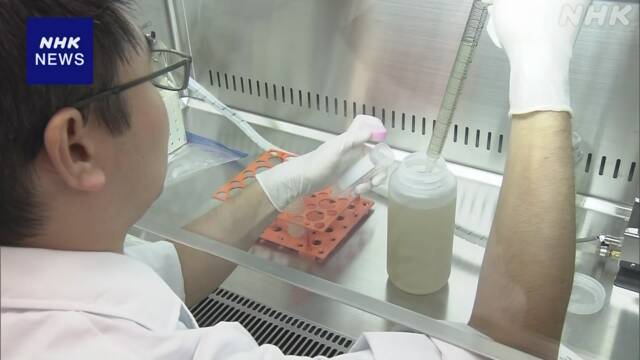Research has begun at Kansai Airport to predict the spread of infectious diseases coming in from overseas by analyzing sewage from international airport terminals and passenger planes, and to use it for countermeasures.
This research is being conducted by a research team from Osaka Metropolitan University.
Untreated sewage discharged from terminals and passenger planes is collected from tanks at the purification center that treats sewage at Kansai Airport, and the presence and amount of viruses and bacteria that cause infectious diseases are analyzed.
Analysis began on the 13th at a university laboratory in Izumisano City, and the members used the sewage collected on the 12th to a centrifuge to extract the sediment.
The research team collects sewage about twice a month to collate the epidemic situation in Osaka Prefecture for about 2 types of infectious diseases such as the new coronavirus, influenza, measles, and dengue fever, and analyze the relationship to predict the epidemic.
According to the research team, this is the first time such research has been conducted at a so-called international airport in Japan.
Professor Shinji Yamazaki of the Osaka International Center for Infectious Diseases, Osaka Metropolitan University, who is the representative of the team, said, "We would like to create an epidemic prediction model by the Osaka-Kansai Expo next year, when many foreigners will come, and use it for infection control.
Prediction in sewage There are challenges in utilization
Sewage surveillance, which analyzes the genes of viruses and bacteria contained in sewage to detect the spread of infectious diseases, is adopted as part of border measures at some international airports in Europe and the United States.
Japan also attracted attention due to the spread of the new coronavirus, but there are also challenges in utilizing it.
In 2021, the national government formulated a plan to promote sewage surveillance, and a total of 20 groups, including local governments, universities, and research institutes, conducted demonstration experiments on the new coronavirus at sewage treatment plants and other locations.
As a result, correlations were confirmed regarding the epidemic situation in the community and the replacement of mutant strains.
On the other hand, there are many issues, such as the large variation in data due to the characteristic of sewage diluted with a large amount of water, and the lack of know-how due to multiple methods for collecting and analyzing wastewater.
In this research at Osaka Metropolitan University, we will also consider solutions to these technical issues.

